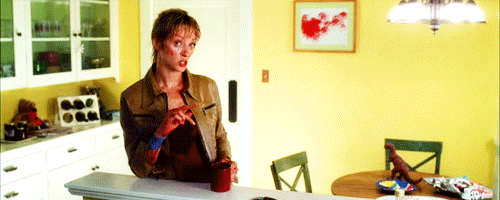One of the disadvantages of being a freelance writer is that there’s no larger platform promoting all of your work. It’s up to you to develop an audience for your writing. Sure, there’s Twitter and Facebook and, to a lesser extent, Tumblr. But it’s so easy for those links to get lost in the deluge.
Enter the email newsletter. I have a weekly newsletter of my own, and I’m a huge proponent of aggregating your own work and directly sending it to people who are interested in hearing from you. As Gabriel Arana, senior editor at The American Prospect, told me about his newsletter, “the goal is more to promote my work to a core group of loyal readers than to drive traffic.” And it’s not only freelancers who are getting into the newsletter game. “I recently took a full-time job at In These Times magazine, and they asked me to take part in emailing my articles around to anyone who might be interested,” says staff writer Sady Doyle, who started sending weekly dispatches.
The upsides for writers are clear. But, as a fellow freelancer emailed me this week, “So many of my journalist acquaintances have added me to their newsletters without asking. Or they email me like four times a week.”

She continued, “We’ve reached peak newsletter, and I feel like we need to establish some ground rules. Is it cool for someone to just add you to their mailing list without asking? And is it rude to unsubscribe to an unwanted list? (I don’t want to burn bridges with my fellow journalists, but my inbox can withstand only so many of these.) Also, at what point should you start one and how often should you write it?”
Here’s an attempt to create some gentle guidelines.
Ask first. Seriously, do not add your entire contact list to your newsletter without asking. Just don’t. That’s poor etiquette and will lead to confusion at best and anger at worst. Editors and colleagues are the last people you want to feel annoyed when they see your name in their inbox. The only people I added to my list without asking first were mom and dad (who share an AOL email address, natch) and my two high-school besties. Feel free to promote the hell out of your subscription page, but don’t take it a step further by adding people yourself.
Establish a structure. Your subscribers will know what to expect from you each week, and having a standard format will prevent you from emailing thousands of rambling words that no one’s going to take time to read (and that you didn’t get paid for). Keep it in check.

Cater to your core audience. If someone, be they a fellow journalist or a reader/consumer, has signed up to hear directly from you, chances are they’re a superfan. So don’t be afraid to show some personality and treat it as a comprehensive digest of everything you’ve produced that week. “The fact is that it’s a crowded media environment, and if you want people to read your work, you have to let them know where to find it,” Doyle says. Email is also a place where we’re used to making direct connections with people. So encourage readers to reply to you with feedback. That said…
It’s not all about you. Well, it is. But understand that your work alone probably isn’t enough incentive to click. “I use it both to promote my own work, but also to aggregate the best content I come across in a given week,” Arana says. “On Twitter and among my journalist colleagues, I am constantly sharing other people’s work and having it shared with me. Putting it all in a newsletter systematizes it.”
Keep the “news” in newsletter. Don’t email just to email, make sure you actually have updates. While sometimes consistency is good, it’s not really worth it if you’re, say, working on a big project or a book and haven’t actually published anything new since your last dispatch.
Anya Kamenetz, a freelance education writer, is still experimenting with the right frequency for her newsletter. She went from sending every two weeks to sending them out once a month. She’s found that a lot of people like the more leisurely pace.
Is this a clear sign that we have, in fact, reached the point of newsletter overload? “I think there’s a danger of saturation,” Kamenetz says. “But then we’ll probably just move on to another channel that once again feels more personal and curated.”
Ann Friedman is a magazine editor who loves the internet. She lives in Los Angeles
